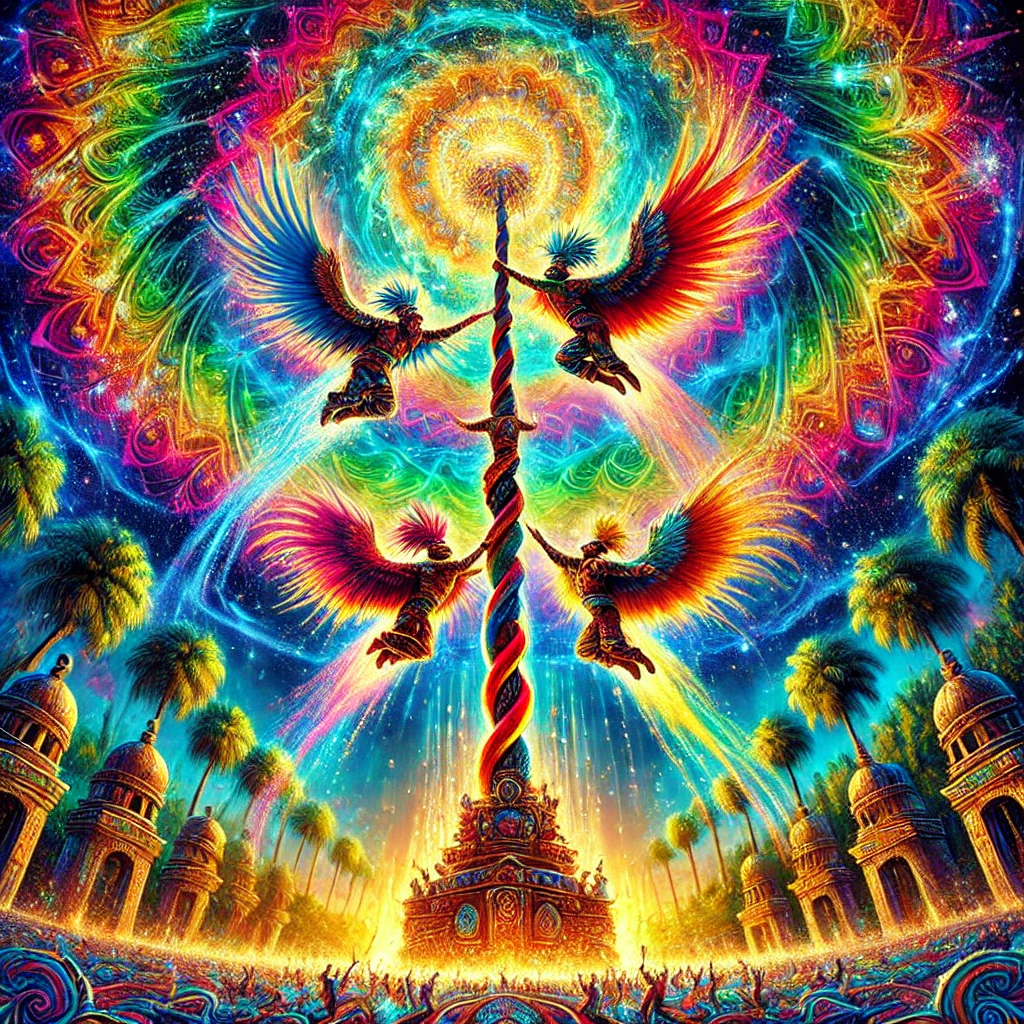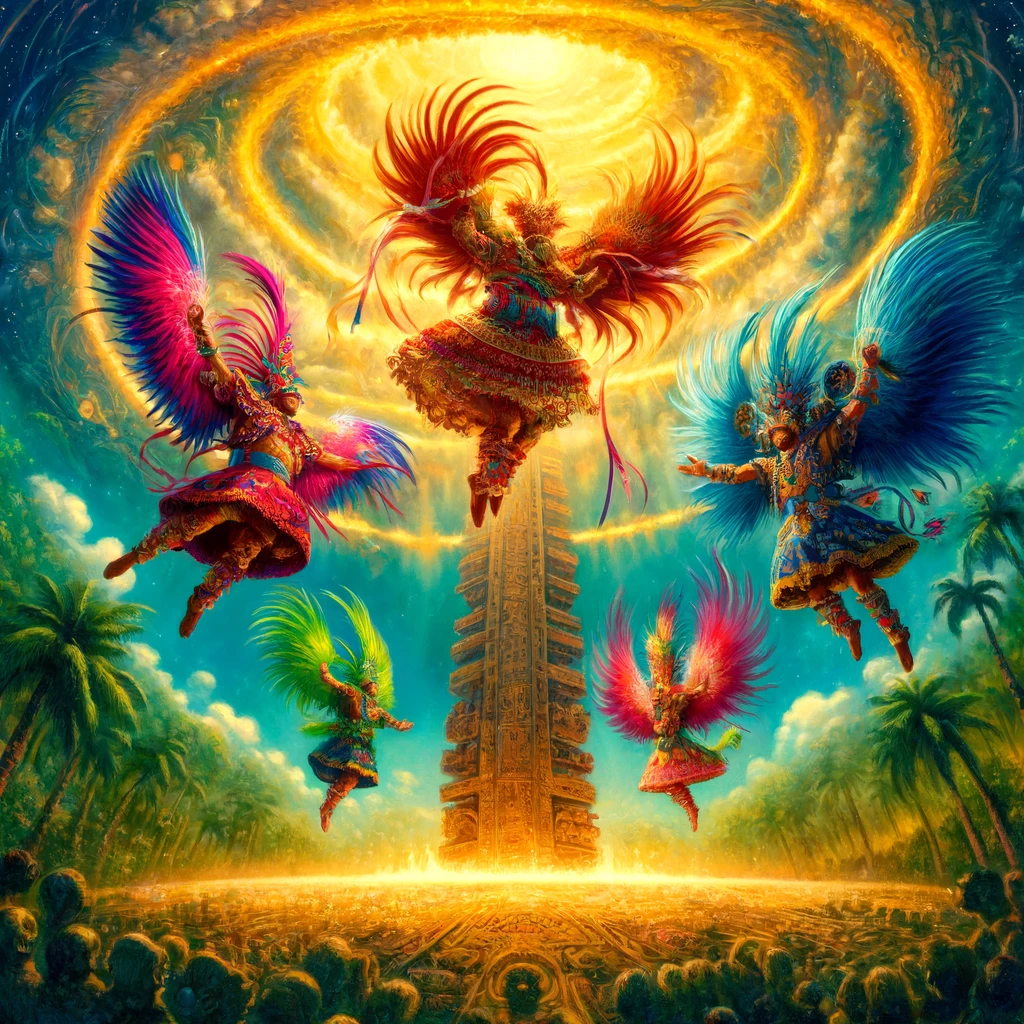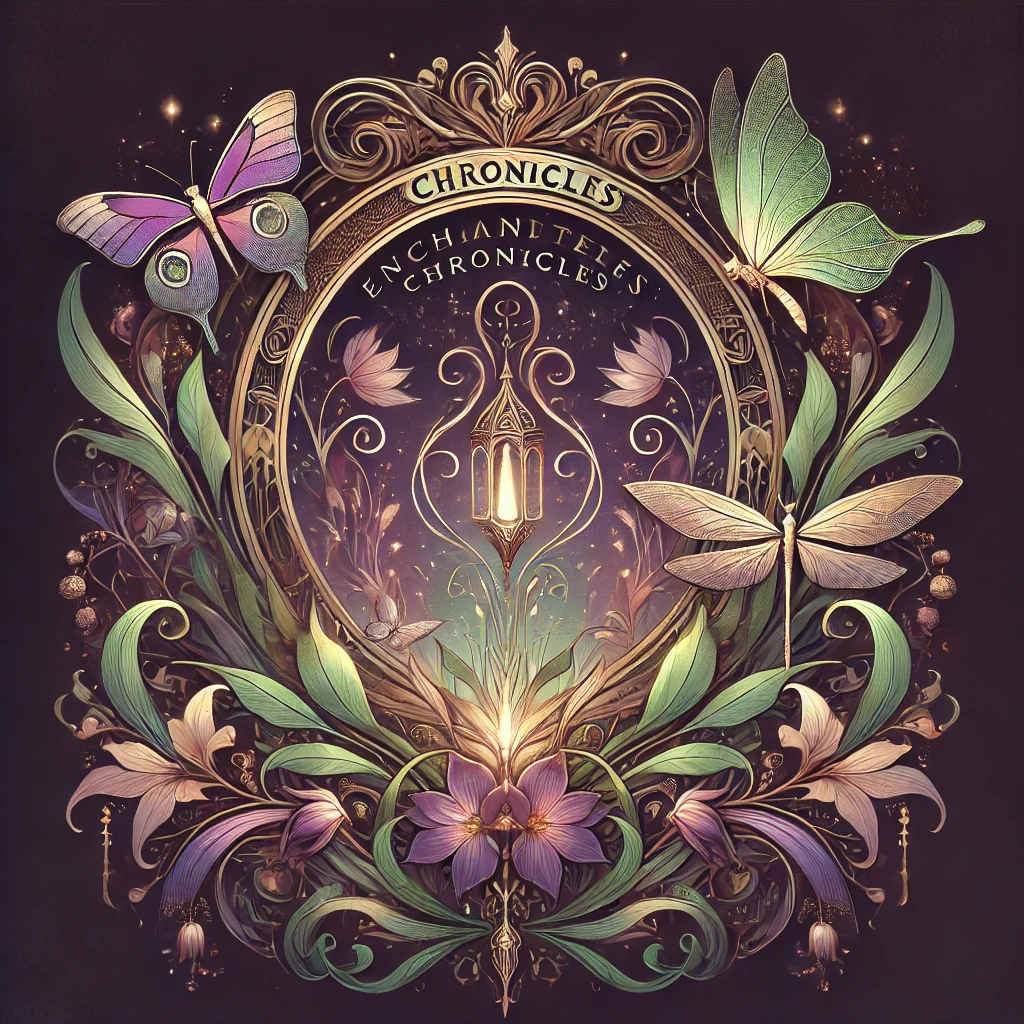The Myth and Mystery of the Voladores de Papantla
The legend of the Voladores de Papantla (or the Papantla Flyers) is one of the most breathtaking and symbolic traditions of Mesoamerican culture. This ancient ritual, performed by the Totonac people, involves men dressed in vibrant costumes climbing a towering pole and then descending in an awe-inspiring, spiraling flight, attached only by ropes. The ceremony is a spiritual act of homage to the gods, particularly those governing the sun, rain, and fertility. But where does this tradition come from, and what has been its journey through history?

By : Nissa Moonstar

The Legend of the Voladores de Papantla – A Sacred Ritual of Flight
In the heart of Mexico’s rich cultural heritage lies a breathtaking ritual that defies gravity and embodies deep spiritual meaning—the Voladores de Papantla. This ancient tradition, performed by the Totonac people, sees men soaring through the sky in a sacred ceremony honoring the sun, rain, and fertility. More than just a spectacle, this ritual is a testament to indigenous resilience, spiritual devotion, and the enduring power of cultural traditions. In this article, we explore the origins, symbolism, and modern significance of the Papantla Flyers, offering an in-depth look at a tradition that continues to inspire awe across the world.
Origins and Historical Context
The origins of the Voladores ritual can be traced back over 2,500 years to the Totonac civilization, which flourished in the region that is now Veracruz, Mexico. According to legend, the ritual was created during a severe drought, when Totonac priests sought divine intervention. They crafted the ceremony as an offering to the gods, believing that the airborne descent would bridge the heavens and the earth, bringing much-needed rain and ensuring the fertility of the land.
The practice spread throughout Mesoamerica, becoming an integral part of various indigenous cultures. The Aztecs, upon encountering the Totonac people, integrated aspects of the ritual into their own cosmology, associating it with https://en.wikipedia.org/wiki/Xipe_TotecXipe Tótec, the god of renewal, and Quetzalcoatl, the feathered serpent deity who symbolizes the union of the terrestrial and celestial realms.
Symbolism and Ritual Elements
Every aspect of the Voladores de Papantla ritual is deeply symbolic:
The Pole: Traditionally made from a tall tree, represents the axis mundi or world tree, a common element in many indigenous cosmologies, linking the heavens, earth, and underworld.
The Flyers (Voladores): Four participants represent the cardinal directions, each tied to natural elements such as earth, wind, fire, and water.
The Caporal: A fifth performer, the leader of the ritual, remains atop the pole playing a flute and drum, symbolizing the voice of the gods.
The Descent: The spiraling motion of the flyers mirrors the cycle of life, death, and rebirth, as well as the movement of celestial bodies.
The Evolution of the Tradition
While the ritual remained strong through centuries, it faced a decline during the Spanish colonization of Mexico. The Catholic Church viewed many indigenous ceremonies as pagan and sought to suppress them. However, in isolated regions, the Totonac people preserved their traditions, passing the knowledge from generation to generation.
By the 20th century, interest in indigenous cultures and heritage surged, and the Voladores ritual experienced a resurgence. It became recognized not only as a sacred practice but also as an artistic and cultural spectacle, drawing attention from travelers and scholars alike.
The Voladores de Papantla Today
Today, the Voladores ritual is performed in various parts of Mexico, most notably in Papantla, Veracruz, where it is a key attraction at festivals and cultural events. In 2009, UNESCO declared the Ritual Ceremony of the Voladores an Intangible Cultural Heritage of Humanity, recognizing its profound historical and cultural significance.
Modern-day flyers undergo rigorous training, learning the spiritual and physical aspects of the ritual. Despite contemporary adaptations, the ceremony remains a powerful link to Mexico’s indigenous past, reminding the world of the Totonac people’s resilience and deep spiritual connection to nature.
The Legacy of the Papantla Flyers
The Voladores de Papantla is more than just an aerial performance; it is a living testament to Mesoamerican traditions, storytelling, and spirituality.
Through centuries of transformation, the ritual has remained an enduring symbol of cultural identity and reverence for the divine forces of nature.
For those fortunate enough to witness this breathtaking ceremony, it is a glimpse into an ancient world where myth and reality intertwine, and where the sky itself becomes a sacred stage.

Join our community of readers Subscribe To our newsletter!

Enchanted Chronicles: Ignite the Myths Within
Step into a world where ancient myths are no longer confined to books—they are part of your journey.
Sign up for free!
We won’t send you spam.
Unsubscribe at any time.
